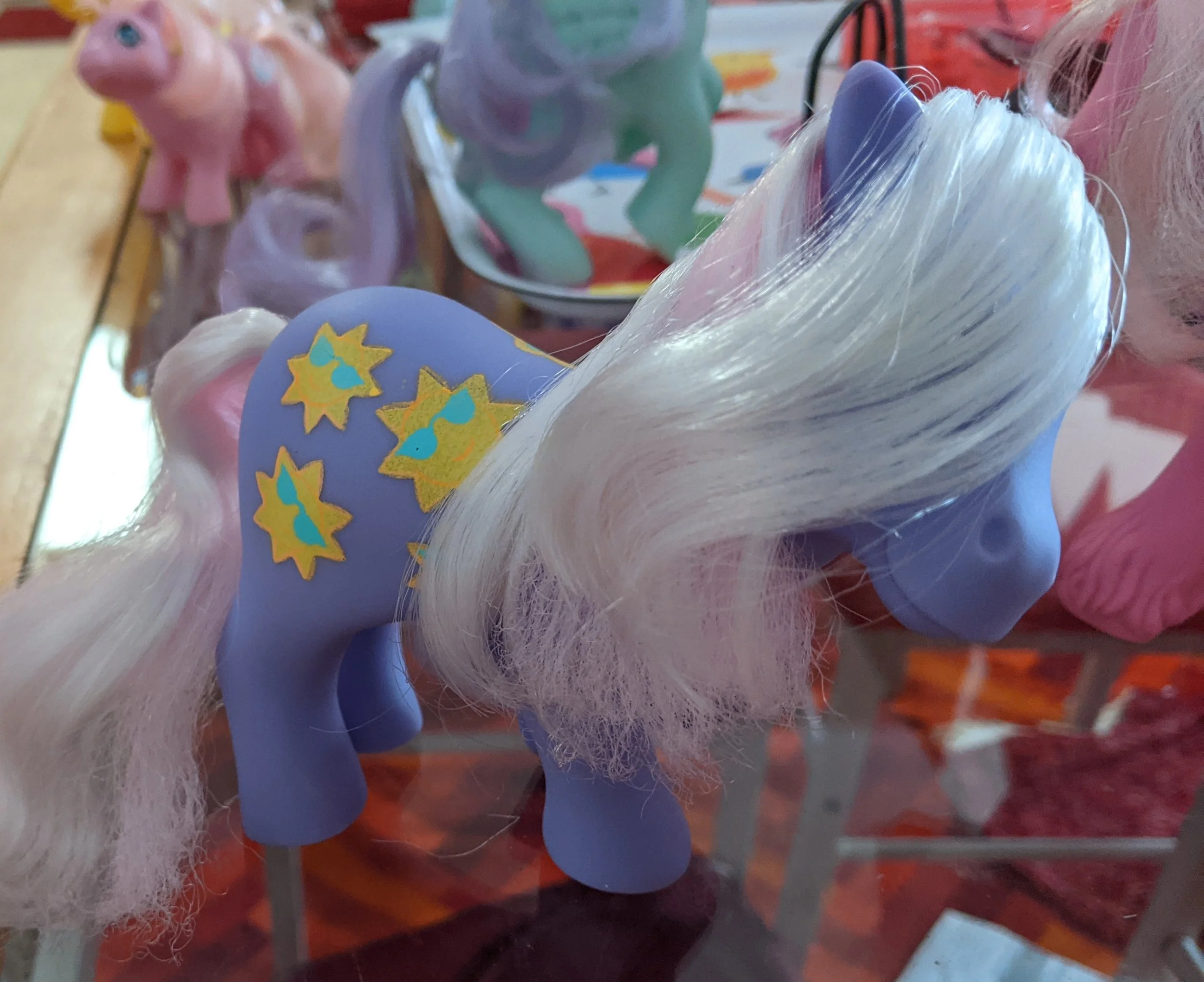My Little Ponies at Church
My Little Pony Collecting 101
“They aren’t worth anything, are they?” my sister asked. I wasn’t sure. I didn’t think so. I thought I’d better check.
Sherbet and Shaggy were the first two ponies I prepared, because Sherbet is purple and Shaggy is cute.
“Good news,” I reported back. “None of the ones we had are all that valuable.”
We were talking about our childhood My Little Pony collection. The time had come to pass them on to my young niece, and so I was cleaning off the grime of years, detangling their hair, and looking up their names on the Internet.
Here is what I learned: The thing about first generation (G1) My Little Ponies is that they weren’t just produced from 1982 to 1995—they were mass-produced. As a result, most of the hundreds of different ponies that were sold in the United States remain readily available to collectors, at prices that are quite affordable if you’re in your 30s or early 40s, which is about the current age of people who were in their original target demographic.
You know what that means, right? My Little Pony collecting is totally a thing.
Blossom, our oldest pony, was one of the ones who needed help. Removing the heads is the hardest part—the glue can be really tough!
There are people who just want to clean up their own childhood collections. There are people who are trying to recreate their childhood collections. There are people who restore damaged ponies. There’s a whole language, with terms like “pony cancer” and “regrind” and “tail rust”. You can re-flock your ponies, or dye “fading pink” hair back to its original color, or learn how to re-root your pony’s mane.
Finally, at the very end of the line, there is “bait”. Ponies are labeled “bait” when they are in such bad condition that there is no hope of restoration. They can only be used for replacement parts or as raw materials to make something new. You can search for bait ponies on Etsy or eBay. You can find lists of ponies uncommon enough you should maybe try to restore them even if they do have a little permanent marker damage. But again, these toys were mass-produced, so for most of them, baiting is not a problem.
What about our ponies? We were surprisingly good at avoiding rust, but a few ponies just didn’t have tails. Some have odd bits of their manes cut out, I can’t remember why. Some would sell for slightly more than others and a few would probably be used as bait right off the bat, but none of them were so valuable that I thought it would be irresponsible to let my niece find totally new ways to mess them up. (I spend like 20 minutes doing a pony’s hair up in perfect, gorgeous curls and then she immediately shakes it back into frizz, as is her right.) So, no, they weren’t worth much in money. But they were worth plenty in joy, and fun, and adventure.
The price of pony beauty. (Note that the yellow pony in the back has “fading pink” hair. #TheMoreYouKnow)
And that makes me happy, because you know what? I kind of loved those toys. I kind of still do love them. (Those childhood emotions don’t just go away!) I would much rather see them loved as they are than used for raw materials.
I feel that way about toys that were mass-produced in the 80s and are now readily available for sale on the Internet. They’re plastic. I have some feelings about them, but they don’t have feelings of their own. They have never been alive. Even my niece, with her vivid child’s imagination, doesn’t really think they are really real.
If I feel that way about these plastic toys, then why doesn’t the church show at least as much love for people?
People make terrible replacement parts. (Or, learning the wrong lessons.)
Oh, right. People. This was always going to be about people, wasn’t it?
The trouble is, a lot of congregations treat new members (and sometimes even new clergy) like bait ponies. We don’t value them for themselves, or for who they already are. We only value them for who we think we can shape them into, or as replacements for the parts we think we’re missing.
In the pony-collecting world, bait is fine. It’s a bit sad, maybe, to imagine your once-loved toys being used as materials, but it’s practical and ultimately maybe even a little hopeful. They can be loved in a new way!
But treating people like that is never okay.
And what’s more, people, unlike ponies, don’t have to tolerate that.
If people realize, or even suspect, or maybe even just fear that you might only want them to be your replacement parts…they are not going to stick around to find out.
Would you treat Shoreline like that? I bet you would not.
My generation, the My Little Pony G1 generation, can tell that’s happening from, like, 500 miles away, easily. Younger generations might be even better at it. But, let’s be honest, this isn’t a generational trait—nobody wants to be replacement parts.
Sometimes it’s really obvious. Ginger takes over the altar guild that used to be run by Glinda. No matter how hard she tries, someone always finds something to complain about. No matter what she does, it will never be enough, because the real problem is that she isn’t actually Glinda 2.0.
Or, more likely, Ginger doesn’t want to take over the altar guild. She probably wants to handle the landscaping, or start an online Bible study group, or organize a trip to participate in a protest march. Nobody is looking for anyone to do any of those things, except maybe the landscaping, which is Oscar’s territory, and he doesn’t like to share.
I honestly don’t remember ever having seen Blossom with all her hair. She looks so cute with it replaced! The match of the new hair is not quite perfect, but somebody went to a lot of effort to get the color that close.
It can be subtle. We’re not doing everything we used to do before the pandemic. (This replacement part is the wrong size.) We don’t have a children’s Christmas pageant like we did when I was a kid. (This replacement part doesn’t fit like the old one did.) It’s so sad that there are only four youth in the Confirmation class. (There aren’t enough replacement parts.) If we don’t bring in more young families with children, the church will die. (We need replacement parts!!!)
Even if they are actually true, comments like these can communicate that the people and the practices we have right now are inherently inadequate. This is treating people like bait.
What’s more, people are always inadequate as replacement parts. The next pastor isn’t good enough. The next youth group isn’t big enough. The next Christmas program isn’t grand enough. They never can be, because they’re not supposed to be enough to replace someone else. They’re supposed to be themselves!
So even if some people do stick around after realizing what we want them for, we’re still not ever going to be happy. As long as we are looking for replacement parts, we’ll always want more.
Play by the rules of play! (Or, maybe there’s an alternative)
Collecting is a great hobby, if you’re into it, but you don’t have to play by the rules of collecting. You can play by the rules of play, instead!
If ponies have a little hair missing from their manes, or some tail rust, or even the dreaded regrind, none of these are problems unless you want them to be. You don’t have to throw them out or give them away or use them for parts. You can play with them just like they are.
My niece doesn’t care that Galaxy has two different colors on her body or that Shoreline’s hair doesn’t change color in the sun. I think she kind of likes it when a pony’s curls are messy.
What if we treated people like that?
A whole bin full of ponies ready to be loved, all of them exactly perfect just the way they are. (Also, most of the ribbons lasted about five minutes, as is traditional.)
What would it be like if, instead of treating newcomers like bait, we treated them more like my niece treats a new-to-her pony? Marker stains are birth marks. Cropped manes show off a pony’s personality. Messy purple hair is perfect because it’s purple (and possibly also because it’s messy). Even the skull-like faces of the Baby Ponies with Beddy-Bye Eyes are adorable in their creepy way.
What would it be like if Glinda told anyone who would listen that Ginger’s new-fangled ideas are a little strange, but actually, going to that protest was even better than the Palm Sundays she remembers from her childhood?
What would it be like if people said, “we have the most amazing four youth in the Confirmation class”?
And hey, there might also be some people who would love to have a good bath and all-new hair and a fresh coat of paint, not because we’re making them into something they’re not, but just because they want to express who they are. Bait ponies can be loved! And people can be restored, whether you get a replacement tail after all, or are simply seen rightly by the eyes of imagination.
What would it be like if we even treated our own churches like that?
Blossom has seen the rare Black-hooded Gull, in case you were wondering how I was going to get birds into this.
Most of our churches are the kind of ponies that get passed down to be played with by young nieces and nephews, not the kind that get put on display in a valuable collection. I’m willing to concede there might exist some churches in mint condition, though I’ve never seen one. After 2000 years of churches being church, there are going to be some signs of wear and tear.
But that’s nothing to be sad about! Rare mint-condition ponies go on display, and that’s great! They can still be loved, from a safe distance, but they’re too valuable (in money value) to play with.
Ordinary flawed ponies, though, have the kind of worth you can’t exactly buy. They can go on epic climbs to the top of the bookshelf. They can give the baby ponies a bath and feed them supper. They can exercise their wings and use their magic to keep children safe. They can reenact favorite stories and conduct important science experiments. They occasionally have a scary run-in with a pair of scissors or a marker or a carelessly spilled glass of milk, but these will also one day be treasured memories.
If the loving imagination of a child can transform a “bait” pony into the hero of many new adventures, what do you think God’s loving imagination can do for us?
In God’s eyes, we are worth everything.
Blossom is invited to preach during Lent, obviously.








